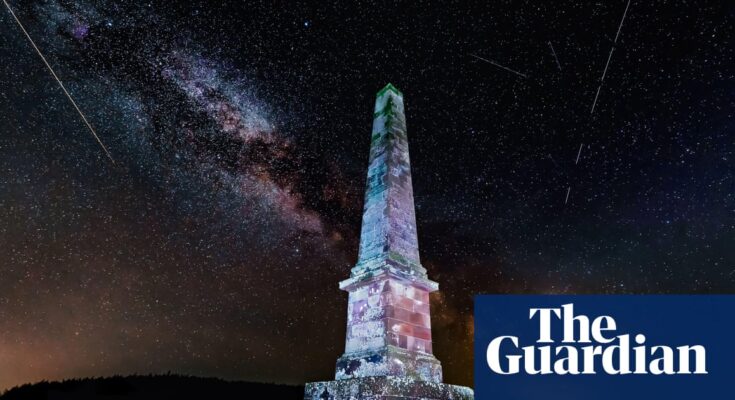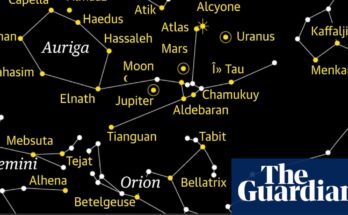The first meteor shower of the summer may peak in the early hours of Tuesday morning with stargazers hoping to see dozens of shooting stars tearing up the night sky every hour.
Astronomers have debated the origins of the Delta Aquariids meteor shower, with the sunrazing comet 96P/Machholz considered the most likely candidate. The four kilometer wide ball of dust, rock and ice takes a little over five years to complete one orbit around the sun.
The Delta Aquariids are active from mid-July to the end of August, but the best time to see the shower is expected to be in the hour or two after midnight in the UK on Monday, before the moon growing is enough to light up the sky.
Meteor showers occur when the Earth passes through the dust stream left by a comet. Dust particles are smaller than grains of sand and produce bright streaks of light when they vaporize in the atmosphere.
On a dark, moonless night, stargazers can expect to see 15 to 20 shooting stars per hour at the height of the Delta Aquariids. The shower gets its name from Aquarius, with the shooting stars that seem to come from the direction of Delta Aquarii, a bright star in the constellation.
To find Aquarius, astronomers recommend looking for the square of Pegasus in the southeast sky, then looking towards the horizon and what looks like a bright star, but which is actually Saturn in Aquarius. When you find the right spot, look about 45 degrees away for the best chance of seeing the longest meteor streaks.
“The key to enjoying any meteor shower is to find a really dark spot in the sky,” Prof Catherine Heymans, the Astronomer Royal for Scotland, told the Guardian.
“To really appreciate this spectacular light show, you’ll need to get away from the street lights and out into the countryside if you can. Then it’s just a case of lying face down on a blanket with a thermos of hot chocolate, watching and waiting. let those shooting stars creep across the sky,” he said.
Of the Delta Aquarii meteors, 5-10% leave persistent trains: bright streaks of ionized gas that are visible for a second or two after the meteor has passed. Because telescopes and binoculars have a narrow field of view, experts recommend seeing with the naked eye after taking time to adjust to the dark.
after the newsletter promotion
“Remember, don’t look at your phone,” Heymans said. “Your eyes take more than 10 minutes to adjust to the darkness, and even a quick glance at your screen will reset them, meaning you could miss something.”
If the cloud or moonlight intervenes, do not fear. The Delta Aquariids rumble in August when they merge with the more prolific and typically brighter Perseids.
“Unfortunately, summer meteor showers are not the best for children, as you need to wait until long after the sun has gone down for the sky to be dark enough to see them,” Heymans said. “But it’s a great event for adults, especially those looking for an excuse to take a romantic star-studded getaway.”



